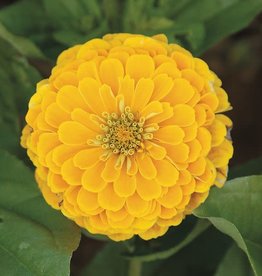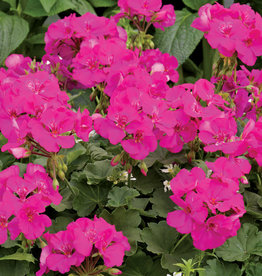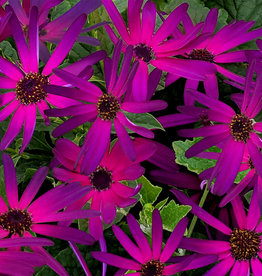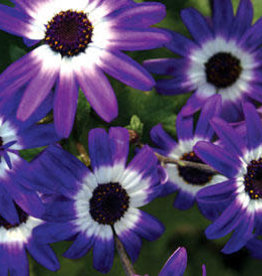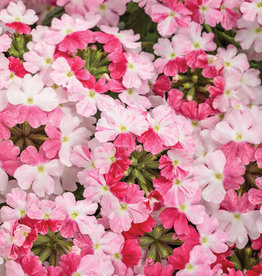Petunia Supertunia Royal Velvet PW 4in
| Availability: | In stock (73) |
Photo and description credit: Proven Winners
Available in April
FEATURES
Supertunia petunias are vigorous with slightly mounded habits that function as both fillers and spillers in containers. They are also excellent landscape plants, best suited to be placed near the front of beds. They have medium to large sized flowers.
CHARACTERISTICS
PLANT NEEDS
Use in hanging baskets, window boxes, landscaping and coombination planters.
These are heat tolerant plants, that aren't particularly fussy and need little routine maintenance. They will perform best if an application of controlled release fertilizer is included at the time of planting. This applies to both landscape and container plantings. Supertunias are heavy feeders, but a single dose is usually sufficient for landscape beds in most climates. If you have a very long season, a second application of controlled release plant food should be considered for landscape plantings. In general, containers need to be fed more than landscape plants. Supertunias in containers will need to be fed more regularly to be their absolute best. A second application of a controlled release fertilizer can be applied about every two months to container plants, which will help. However, for the very best performance I find regularly applying water soluble fertilizer starting about two months after the containers are planted gives the best results. These extra applications of plant food really makes a difference in performance through the summer.
If your plant begins to look open or a bit tired, an allover trim can be beneficial. Use a sharp pair of scissors or pruning shears to trim back up to 1/3 of the volume of the plant. I pair any trim with a dose of water soluble fertilizer to provide instant energy to help kickstart new growth, branching and flowering. Your plant will take a week to recover from the trim, but the end result is a fuller plant with more blooms going forward. You may repeat the trim as needed through the season.
The Best Petunia. Period.®Not to brag or anything, but purple has been the royal color since the Phoenicians. You know, back in the Jurassic Period. You wont find flowers anywhere that are a deeper, darker or more velvety purple-blue than mine. Since Im also a Supertunia (the Queen of Petunias) its a given that I bloom from spring until a hard frost.
Not to brag or anything, but purple has been the royal color since the Phoenicians. You know, back in the Jurassic Period. You won't find flowers anywhere that are a deeper, darker or more velvety purple-blue than mine. Since I'm also a Supertunia (the Queen of Petunias) it's a given that I bloom from spring until a hard frost. As in a gushing geyser of flowers. I also have a queenly scent that's especially noble in late afternoon and early evening. To show off my trailing habit use me in hanging baskets, containers or beds. As for colors, combine me with just about any--red, orange, white, pink, light blue, yellow, you name it.
Being a nonstop producer of large purple Petunias is labor-intensive (no pun intended) so please feed me once a week with an all-purpose liquid fertilizer. In return, I promise to attract hummingbirds and butterflies, shed old blooms so you don't have to deadhead, and tolerate dry conditions.






